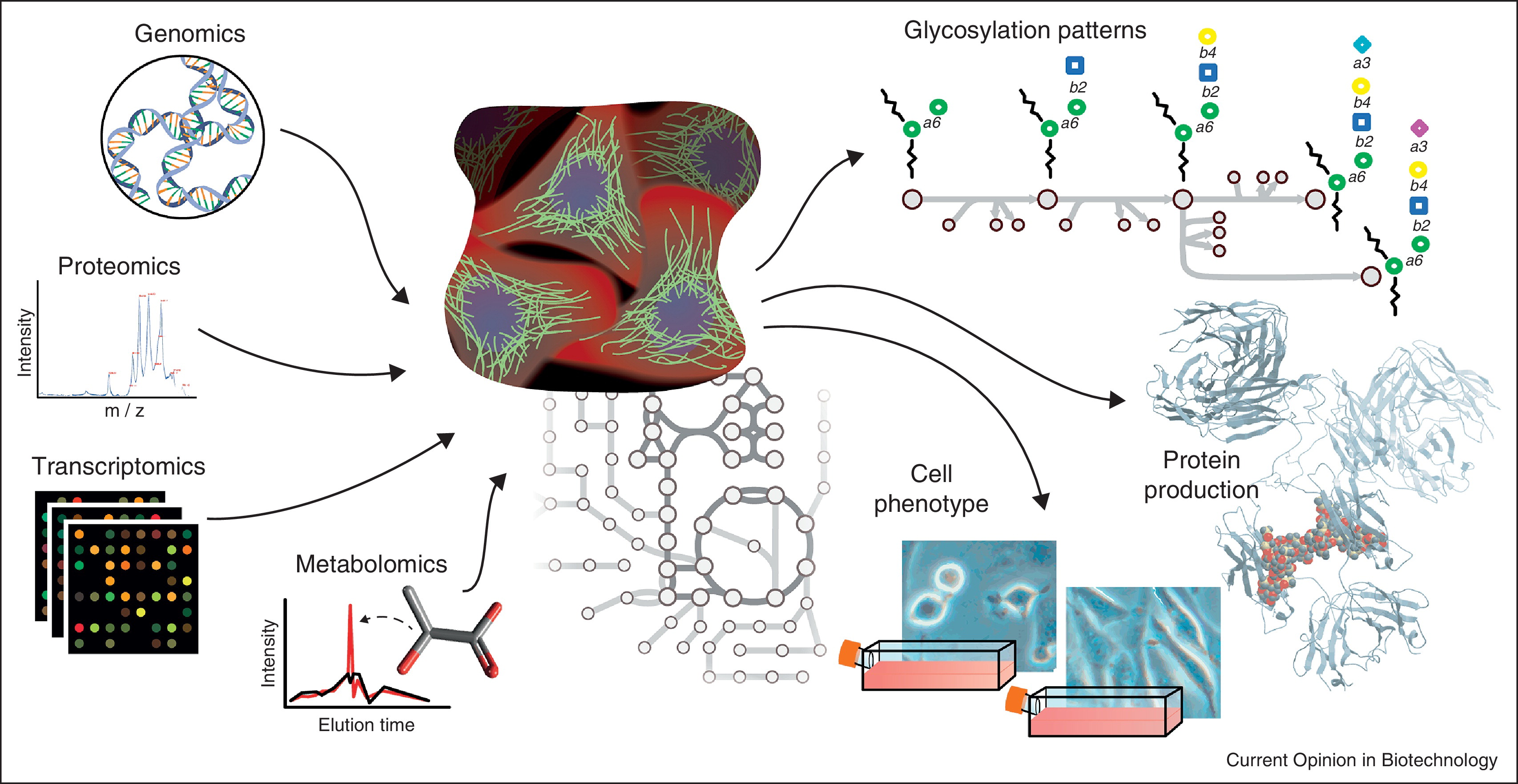Beten-omics
Subtopics

Chinese hamster ovary (CHO) cells are the primary factories for biopharmaceuticals because of their capacity to correctly fold and post-translationally modify recombinant proteins compatible with humans. New opportunities are arising to enhance these cell factories, especially since the CHO-K1 cell line was recently sequenced. Now, the CHO systems biology era is underway. Critical ‘omics data sets, including proteomics, transcriptomics, metabolomics, fluxomics, and glycomics, are emerging, allowing the elucidation of the molecular basis of CHO cell physiology. The incorporation of these data sets into mathematical models that describe CHO phenotypes will provide crucial biotechnology insights. As ‘omics technologies and computational systems biology mature, genome-scale approaches will lead to major innovations in cell line development and metabolic engineering, thereby improving protein production and bioprocessing.
References
Kildegaard, Helene Faustrup, Deniz Baycin-Hizal, Nathan E. Lewis, and Michael J. Betenbaugh. "The Emerging CHO Systems Biology Era: Harnessing the ‘omics Revolution for Biotechnology." Current Opinion in Biotechnology 24, no. 6 (2013): 1102-1107.